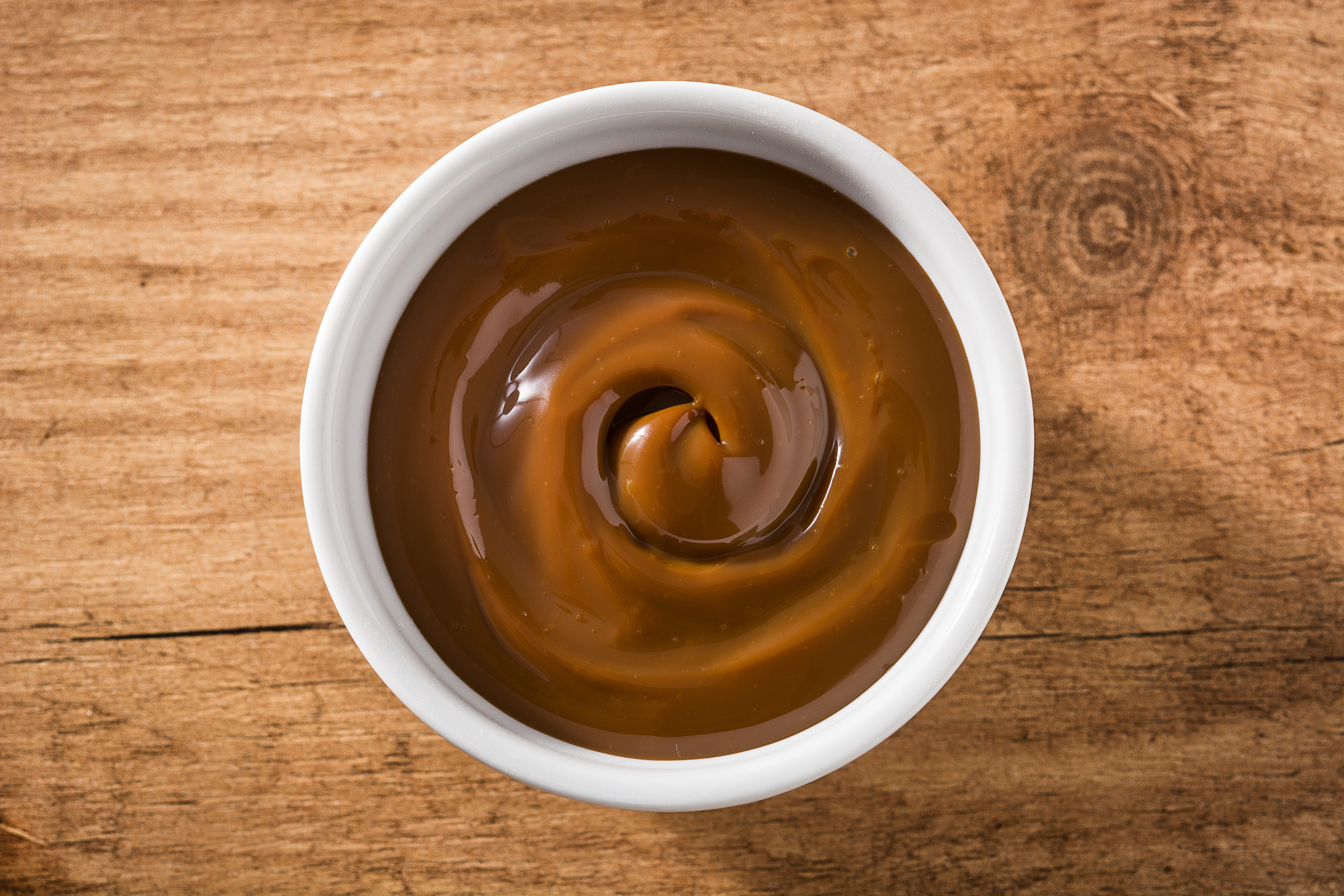

Dulce de Leche
Brian T. HillWhen we recently enjoyed some dulce de leche, Kathy remarked that it tasted a bit burnt. It’s common for dulce de leche to taste like that, but it can come as a surprise to people who expect simply a caramel flavor. Dulce de leche does resemble caramel somewhat, but it is a bit different.
Caramel and dulce de leche both share a similar golden-brown coloring (which we sometimes call a caramel color), though dulce de leche is often a little darker. Both are sweet, sticky, and creamy.
When we examine how each is made, we find some important differences. Caramel comes from heated sugar. As sugar heats, it breaks down and releases water molecules. This concentrates the sugar, and it starts to become viscous. As it heats more, the sugar molecules break apart and recombine in other structures, forming a complex mixture of compounds—polymers known as caramelans, caramelens, and caramelins) with the characteristic brown color. The rich, nutty flavors come from the release of volatile chemicals—like diacetyl. (Further heating can cause the sugars to burn, resulting in a bitter and unpleasant taste). Caramelization is used in cooking to add flavor and color in dishes like caramelized onions, roasted vegetables, and desserts like crème brûlée. Caramel can be enhanced with the addition of vanilla, butter, and/or cream, but the pure caramel part comes from the processed sugar.
Dulce de leche, on the other hand, is typically made by caramelizing sweetened condensed milk. While the caramelization process is similar to the one in caramel preparation, this one involves caramelizing the lactose and other sugars present in the milk. This process is usually performed slowly, at lower heat and sometimes over several hours. This allows the milk to caramelize gradually, without burning or scorching, and results in a smooth and creamy texture.
Dulce de leche appears in recipes from many parts of the world. However, it seems especially common in Latin America, where it is widely believed to have originated. In 2003, Argentina petitioned UNESCO to declare dulce de leche a unique part of Argentina’s cultural heritage. The petition failed, as Uruguay argued it was part of the Gastronomical Heritage of the Rio de Plata, which region is shared by the two countries. Yet, many other countries also claim the origins of this confection.
My favorite origin myth involves a general in the Argentine army. Some tellings of this legend say it occurred near Buenos Aires in 1829. Other tellings say it was in the Pampas region during the Argentine War of Independence (1810-1820). Either way, it involves a group of soldiers in a war camp. One of the soldiers—or maybe it was the general’s maid—began to heat a pot of sweetened condensed milk over a campfire. Suddenly, the soldiers were called to battle—in some versions it was a treaty discussion— and the cooking pot was forgotten for a time. When the soldiers returned to the camp, they found the milk had turned to a dark brown gooey mess. I’m not sure who ventured the first taste (or why), but they discovered a delicious new dessert.
This story is almost certainly apocryphal. A similar legend claims that Napolean’s own maid forgot the milk on the stove. Napolean then took her discovery to Spain. From there, it made its way to the Americas.
We’ll probably never know the truth. Whatever it might be, I’ve always been fond of both dulce de leche and caramel. Kathy loves chocolate, but I always prefer a good caramel.